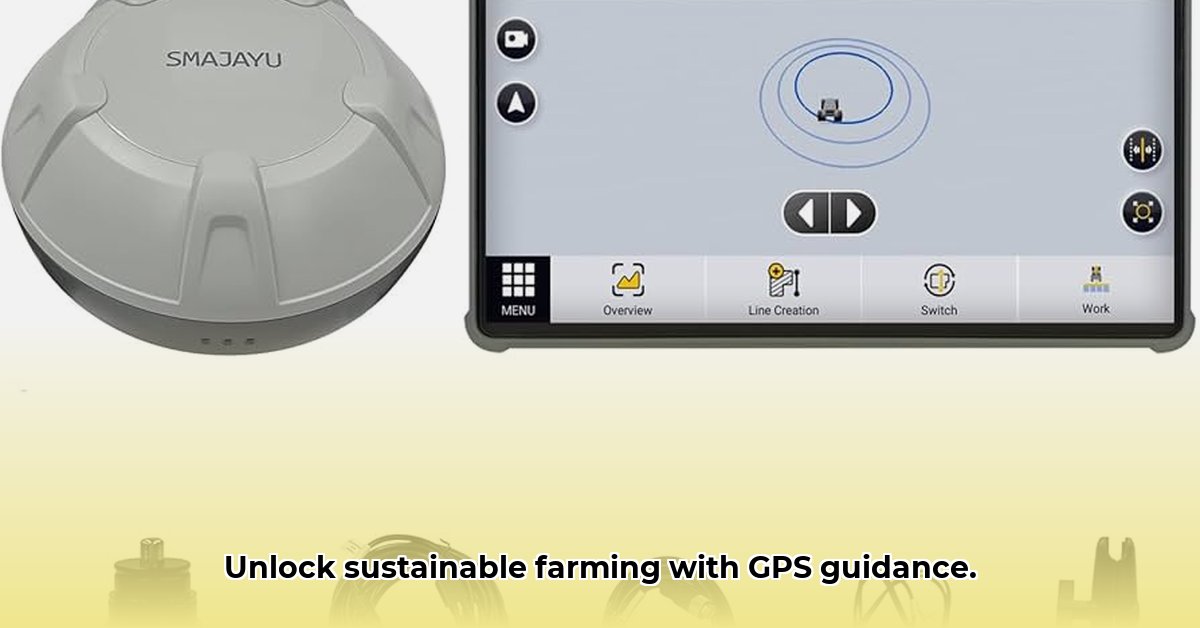
Choosing the Right Budget GPS Guidance System for Your Farm
Choosing the right GPS guidance system can significantly improve your farm's efficiency and sustainability. This review provides a comparative analysis of budget-friendly options, helping you navigate the market and select the best system for your needs and budget. We'll explore key features, compare different systems, and offer actionable recommendations for farmers of all sizes. For more in-depth information, check out this helpful resource: GPS Guidance Systems.
Key Features & Considerations for Tractor GPS Guidance Systems
Several factors influence the choice of a GPS guidance system. Understanding these essentials helps ensure a wise investment that aligns with your farming practices and budget constraints.
Accuracy: The precision of your GPS system directly impacts efficiency and resource use. Basic systems offer accuracy within 8-12 inches (using standard GPS with EGNOS/WAAS corrections), sufficient for tasks like tilling or fertilizer spreading. However, for precision applications (e.g., controlled traffic farming, herbicide application), Real-Time Kinematic (RTK) systems, boasting accuracy within an inch or less, are vastly superior. RTK requires a subscription for correction signals.
Ease of Use: A user-friendly interface is crucial. Look for intuitive controls and clear navigation, saving you time and frustration. Consider the technical skills of your team and select a system that matches their capabilities. If you're new to GPS, consider systems with extensive tutorials or opt for a demo before purchasing.
Compatibility: Ensure compatibility with your existing equipment. Check for ISOBUS compatibility (an agricultural machinery communication standard) for seamless integration with your tractors and other implements. Confirm operating system compatibility (Android or iOS) as well.
Subscription Costs: Many systems, especially RTK systems, require ongoing subscriptions for data correction signals or access to cloud-based data management. This represents a recurring cost; factor it into your long-term budget.
Farm Size and Needs: The size of your operation dictates the level of sophistication required. Small farms might only need basic guidance, while large operations may benefit from advanced features like automated steering and variable-rate application.
Comparative Review of Budget-Friendly GPS Guidance Systems
The following table compares several budget-friendly GPS guidance systems. Note that specific features and prices can vary among manufacturers; this review focuses on general categories. Prices are estimates and influenced by features and packages.
| System Type | Accuracy (inches) | Ease of Use | Compatibility | Monthly Subscription | Pros | Cons | Approximate Cost |
|---|---|---|---|---|---|---|---|
| Basic GPS System | 8-12 | High | Broad | Low/None | Affordable, user-friendly, simple setup, suitable for smaller farms | Limited features, lower accuracy for precision tasks | Low |
| Mid-Range GPS System | 4-8 | Medium | Broad | Moderate | Good balance of features and accuracy, more reliable. | Higher initial cost, steeper learning curve than basic systems | Medium |
| Advanced RTK System | <1 | Medium | Broad | High | High accuracy, ideal for precision farming, minimizes input waste | Highest upfront and recurring costs | High |
| Open-Source Options | Variable | Low | Varies | Varies | Customizable, potentially cost-effective, but requires technical expertise | Requires technical expertise; support might be challenging; variable accuracy | Variable |
Case Studies: Real-World Applications
Small Organic Farm: A basic system improved fertilizer application efficiency, reducing waste and maintaining sustainable farming practices.
Large-Scale Corn Operation: An RTK system enhanced planting precision, optimizing yields and minimizing chemical use.
Diversified Farm: Utilizing open-source solutions demonstrated cost-effectiveness, although setup required higher technical expertise.
Actionable Recommendations: Selecting the Right System
Small-scale farms: A basic GPS system offers a cost-effective solution, improving efficiency without a large investment.
Large-scale operations: An RTK system justifies the higher cost through increased precision, minimizing waste and maximizing yield.
Budget-conscious farmers: Explore leasing or sharing systems to reduce initial costs. Consider what features you need NOW, versus what may be useful in the future; overspending on unused features is unwise.
Risk Assessment & Regulatory Compliance
Accuracy limitations: Less advanced systems might not perform optimally in challenging conditions.
Equipment failure: Regular maintenance is vital to prevent costly downtime.
Data connectivity: Consider backup strategies for internet outages if your system relies on online data.
Data privacy: Adhere to all relevant data privacy regulations to protect sensitive information.
Conclusion: Driving Towards a Sustainable Future
Investing in a GPS guidance system improves farming efficiency and sustainability. By carefully assessing your needs, budget, and potential risks, you can choose a system that enhances your operation and contributes to responsible agriculture. Remember to thoroughly research different brands and models to find the best fit for your unique circumstances.